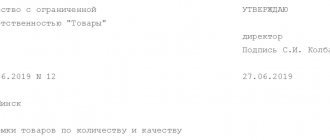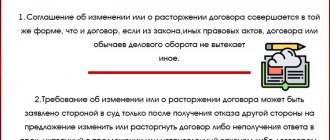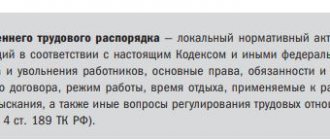At what stage is the act filled out?
The procedure for delivering goods is quite simple:
- the shipper loads the goods,
- the forwarder delivers it to its destination, where it is unloaded at the buyer’s warehouse.
At the same time, during loading, the goods are weighed, checked and all parameters are entered into the necessary documents, the same happens upon receipt.
Just at the moment of unloading, it may become clear that the indicators included in the shipping documents do not agree with those received upon delivery. You need to draw up a report about this right there, on the spot, before the driver transporting the cargo has gone home.
https://youtu.be/qzuQzKWv6_0
When to draw up an act
As a rule, discrepancies with the indicators included in the shipping documents are identified during unloading of goods. The TORG-2 act must be drawn up immediately after discovering facts of non-compliance in the presence of the driver who delivered the goods. If the integrity of the product packaging is damaged, this will also become the basis for issuing a document.
The sequence of actions of the employee responsible for the acceptance of goods and materials, in case of detection of inconsistencies, will be as follows:
- stopping the goods acceptance process;
- notification to the supplier or his representative;
- drawing up a report in the presence of a representative of the supplier.
Sample of filling out a statement of discrepancy
Filling out the first page of the TORG-2 form
At the beginning of the document, information about the company to which the goods arrived is written:
- its full name,
- address,
- telephone,
- OKPO code,
- Kind of activity,
- structural unit that accepted the cargo
- a link to the document that served as the basis for drawing up the act (usually an order or instruction from the director).
All entered data must be identical to those specified in the constituent documents.
The act must be assigned a number and the date of its writing must be entered on the form. The lines on the right reserved for approval are filled in by the head of the company.
Further, in the “Place of acceptance” paragraph, the actual address of receipt of the cargo is indicated, the date of delivery and a link to the accompanying documents (indicating their name, number, date of creation) are noted. The method for calling the representative of the consignor of the goods is also entered here and the lines dedicated to the shipper, manufacturer, supplier are filled in - everywhere you need to indicate the appropriate name of the company, address, contact phone number.
If the product was insured, this should also be noted by entering information about the insured.
The following part of the act includes:
- data on the documents on the basis of which the delivery was made (link to the contract, invoice number, and if necessary, you should also enter the number of the railway invoice, veterinary certificate, commercial act);
- delivery method (railway, water or air transport, car, etc.);
- departure date;
- some details about the loading location (warehouse, pier, station, terminal, etc.).
Below is a table in which you need to enter the exact time of departure and arrival, opening, and delivery of the cargo (down to minutes). If there were any pauses during the unloading period, this should also be noted.
Filling out the second page of the TORG-2 form
The second page of the TORG-2 form begins with entering information about the condition of the vehicle, as well as the presence of labels, seals and other markings on the products.
The following information is entered into the table:
- imprints on the cargo,
- number of occupied seats,
- type of packaging (bag, box, container, pallet, etc.),
- product name,
- everything related to weight (unit of measurement, net-gross).
If there is any special additional information, it should be entered in the last column. Under the table it is necessary to indicate whether facts of violation of the integrity of seals or labels were recorded.
The second table on this page of the report concerns the actual information about the discrepancy: first, the indicators from the accompanying documents filled out by the sender are entered here, then those that were received when checking the received cargo. As a result, a discrepancy is entered (with a + or - sign).
Another table contains detailed information about the product (if there are several items, then a separate line is allocated for each of them). This includes:
- his name,
- seat number in the vehicle,
- unit of measurement (in words and in code),
- article (if available),
- variety,
- quantity,
- unit price),
- total amount.
Filling out the third page of the TORG-2 form
The following information is indicated on the third page of the act.
- Information about storage and transportation conditions. Here you can enter any parameters that can affect the quality of the product: temperature, humidity, lighting, air exchange, etc.
- The condition of the packaging and labeling at the time of external inspection, as well as the correspondence of the stamped cliches to the sender’s labeling.
- The date the container was opened, and it is also stated (or not stated) that the prints and seals correspond to the condition indicated in the shipping papers.
- Information about the inspection (whether it was random or complete) and how it was carried out; if the inspection was selective in nature, then you need to write the basis for its conduct.
In the table on page three you need to write data about those parameters of the cargo that were recorded at the time of acceptance: grade, article, quantity, price, amount.
If a defective or defective cargo has been identified, this should also be included.
Then deviations are recorded (shortages or surpluses - quantity, amount of the difference) and the product passport number, if any.
Filling out the fourth page of the TORG-2 form
The fourth page includes:
- information about determining the quantity of goods (how it was carried out: weighing, counting, etc.);
- information about the location of this operation;
- devices used in the procedure (their name, type, number, brand);
- enter the nature of the identified discrepancies (underweight, overweight, poor quality, defects, damage, etc.);
- conclusion of the commission (usually information is indicated here about whether claims should be made against anyone and, if so, to whom exactly).
The last part of the act contains
- information about the members of the commission who were present during its preparation: their positions and full names are written,
- as well as information about the shipper’s representative (his position, full name and link to the power of attorney).
If any additional supporting documents are attached to the act, then their number must be entered in the form.
Then everything is signed by the chief accountant of the company, and finally the manager’s verdict is issued.
TORG-2: sample filling 2020
If, upon delivery of goods, discrepancies in quality or quantity are found in the order, the TORG-2 form is filled out. The 2019 sample and the form are below on the page.
Form TORG-2: download for free in excel
×
Get the form for free!
Register in the online document printing service MoySklad, where you can: completely free of charge:
- Download the form you are interested in in Excel or Word format
- Fill out and print the document online (this is very convenient)
Form TORG-2 is the legal basis for making claims to the supplier. Please fill it out carefully. See our sample act on the TORG-2 form - all required fields and columns are highlighted in color.
Act TORG-2: sample filling
×
Get a sample for free!
Register in the online document printing service MoySklad, where you can: completely free of charge:
- Download the sample you are interested in in Excel or Word format
- Fill out and print the document online (this is very convenient)
Let's look at when you need to fill out the TORG-2 form. First specify:
- Information about the company that accepts the goods: name, address, details, type of activity.
- Act number and date of preparation.
- Place of acceptance: address of receipt of goods, date of delivery. Here you must indicate how to call the supplier’s representative.
Further, the unified form TORG-2 should contain:
- Information about the documents on the basis of which the goods were brought: information about the contract, invoice number, etc.
- Delivery method.
- Departure date.
See our sample of filling out TORG-2, which is current in 2020 - you can’t go wrong when filling it out. Next, we’ll look at how to fill out the second part of the document—the table. Please indicate in it:
- Information about the cargo: imprint, number of pieces.
- Type of packaging: box, container, etc.
- Product Name.
- Data on the weight of inventory items: unit of measurement, gross / net.
If you have additional information about the product, write it in the last column.
Next, in the unified TORG-2 form, there is another table in which information about the discrepancy is noted. Here you need to list the actual characteristics of the product and those indicated in the accompanying documents.
Then there is a table in which you need to describe the product in detail:
- Name,
- seat number in the vehicle,
- unit of measurement
- variety, quantity, article,
- unit price and total amount.
On the third page of the document indicate:
- information about storage and transport conditions, for example, temperature, humidity, etc.,
- data on the condition of the packaging,
- the date on which the package was opened,
- information about the verification: selective or complete.
See our example of filling out the TORG-2 act: all the necessary data is included in the invoice.
And you can use TORG-2 (excel) for free. The invoice can be supplemented: read the instructions and add data if necessary.
Features of the formation of the act, general points
In practice, situations may arise where a shortage of goods can only be discovered after receipt of the goods. For example, when receiving goods, you counted the number of boxes, but upon subsequent opening, you discovered that the boxes were only half filled. In this case, it is allowed to fill out an act of arbitrary content.
After drawing up the report, do not forget to write a claim and send both documents to the supplier. When sending, take into account the deadlines described in the contract, and if there are none, send the documents as quickly as possible after identifying the shortage. Remember that if you delay sending the documents, the shipper can legitimately ignore your requirements.
Based on the clauses of the parties’ agreement, you have the right to demand:
- Refusal of the delivered batch of goods, and in case of prepayment, return of funds;
- Additional delivery of goods;
- Agreement with the supplied quantity of goods. However, if an advance payment was made for the entire shipment, you may request a refund of part of the funds.
When choosing the last two options, the shipper is required to make adjustments to the invoice, certifying the documents with the personal signature of the manager, the seal of the organization and the exact date of the amendments. As for invoices, making amendments to these documents is completely optional, since the fact of short delivery of goods will be reflected in the act.
Sample of filling out TORG-2 in case of defect
If you find a defect, information about it must be entered in a special table. It also contains information about the broken product. It is necessary to note the article, quantity, price of goods and materials. Carefully look at the sample of filling out TORG-2 in case of a defect - you cannot make mistakes in this table.
In the same table, shortages or surpluses are indicated: the quantity and amount of the difference.
On the fourth page of the TORG-2 form, you should note:
- what discrepancies were found: underweight, defects, poor quality, etc.,
- how the goods were checked: recalculation, weighing, etc.,
- other information that will be important for describing the defects.
The document must be signed by all members of the commission who conducted the inspection, as well as the supplier’s representative.
At the end of the document, the chief accountant must sign, and the manager must write a decision on the product. For example, he may order it to be returned or file a claim with the supplier. Check out our current 2020 sample of filling out TORG-2 - we have highlighted in color everything that needs to be filled out.
For each batch received from one supplier with one waybill, a separate TORG-2 act is drawn up. You can download the form here. More than 1,000,000 companies already print invoices, invoices and other documents in the MyWarehouse service Start using
Filling out the form is quite difficult, so below we have discussed frequently asked questions about completing the TORG-2 form.
How many copies of TORG-2 must be filled out?
Four copies are required:
- one is transferred to the accounting department,
- the second must be given to the specialists who will file the claim,
- the third - to the supplier's representative,
- the fourth remains with the transport company.
TORG-2 forms (xls) are available.
The sample act in form TORG-2 lists only those inventory items for which there are discrepancies. What about the rest? Do they need to be indicated in the document?
No. Products for which there are no complaints do not need to be included in the document. Make a note at the end: “There are no discrepancies regarding other inventory items.” See our TORG-2 act - the sample form contains all the necessary information.
They brought us a shipment of refrigerators, but they are missing two pieces. We need to document this. Can we take TORG-2 as a sample report of shortage of goods upon acceptance?
Yes, the TORG-2 invoice is suitable for this. Enter information about the quantity discrepancy on the third page of the document.
We bought imported goods, and upon receipt we found a discrepancy with the order. What document should I use to document this?
You need to draw up an act in the TORG-3 form. It is used specifically for imported goods, if upon acceptance the consignee found discrepancies in quantity or quality. If you are dealing with Russian suppliers, you will need a TORG-2 invoice. You can use it for free (excel).
You may also find it useful:
Complaint to the supplier for the return of goods
Invoice
Other forms of documents
How to write a letter of claim regarding the delivery of products in incomplete quantities?
If you want to find out how to solve your particular problem in 2020, please contact us through the online consultant form or call:
- Returning the delivered goods back to the supplier.
- Refunds for undelivered goods.
- Replenishment of underdelivered quantities of goods in a short time.
If the buyer has not refused the purchase and sale agreement, or its validity period has not expired, the supplier is obliged to make additional delivery of the required batch of goods (in accordance with paragraph 1 of Article 511 of the Civil Code).
But when the contract has expired, the supplier is not obliged to make additional delivery, and the buyer’s demands for this will be outside the legal framework.
According to the definition of the Supreme Arbitration Court of 2011 No. VAS-12410/11, the buyer, after the expiration of the contract, cannot recover a penalty from the supplier. At the same time, he has the right to recover losses from the supplier that he incurred due to incomplete delivery of goods.
But usually, even despite the expiration of the contract, the buyer and supplier manage to agree on additional delivery of the required batch of goods. In this case, the additionally delivered goods will be perceived as a one-time purchase and sale transaction.
The buyer should take into account the position of the courts that under-delivery cannot be equated with delivery
poor quality
goods or goods with defects. Therefore, it cannot serve as a basis for terminating the purchase and sale agreement.
If a shortage is identified, then a report on the short supply of goods is drawn up. Such a document is drawn up in any version, unless a different option is specified in the purchase and sale agreement. Thus, an agreement between some counterparties may contain detailed instructions on the acceptance of goods by quantity.
Typically, the procedure for identifying deficiencies includes the following steps:
- During the process of accepting the goods, a representative of the seller is invited to draw up a deficiency report.
- The act must include: information about the recipient; information about the persons who participated in the acceptance; date and number of the delivery note, quantity of missing goods, etc.
- Copies of supporting documentation must be attached to the act.
The fact of shortage or underdelivery of goods is recorded in a statement of discrepancies between what was actually received and what was indicated in the invoices or in the contract. The act is drawn up together with the supplier’s representative. The representative must sign the act on the part of the supplier. If, under the contract, it is possible to call a representative of the supplier to draw up such a report, the notice of shortfall in delivery of goods indicates a reasonable time for the representative’s arrival. If there is no representative, the buyer will draw up a deed unilaterally.
The buyer has the right to draw up a deed in any form. But it is better to use forms No. TORG-2 or No. TORG-3. Standard forms contain fields for all necessary data. In addition, the form of the act is important when drawing up an adjustment invoice. The tax office may not accept the invoice if the document is not in proper form.
The act states:
- when and how the supplier’s representative was called;
- who sent the goods;
- who is the manufacturer of the product;
- how the goods were delivered;
- what exactly is the shortage of goods or short delivery (list the names of the missing goods, the quantity of delivered and missing goods, the cost of those and other goods);
- what dates and numbers do the contracts, invoices and delivery notes have?
If the parties used the services of a carrier company, the shortage upon acceptance must be registered in the presence of a representative of the carrier.
So, what rules need to be taken into account when making a claim regarding non-delivery of goods or violation of delivery deadlines? As a rule, there is no generally established template that must be followed when writing a complaint. Therefore, you have the right to draw up a document in free form, taking into account some legal points.
According to legislative norms, when delivering goods, the consignee must draw up a statement of discrepancies in quantity or quality, in which he must indicate surpluses or shortages. It is this document, or rather its copies, that can help you restore justice.
There are certain unified forms of the act:
- Act (form number TORG-2) – drawn up when shipping Russian goods;
- Act (form number TORG-3) – drawn up when shipping foreign goods;
- Act (form number M-7) - drawn up when receiving materials.
If the consignee accepts several commodity items, the act must indicate only those for which a shortage was identified. Also at the end of the document it is necessary to indicate that no discrepancies were identified regarding other inventory items.
Experts advise drawing up a report only in the presence of a representative of the shipper. To do this, the contract must indicate the priority method of notifying persons of the need to invite a representative to accept the goods, the timing of arrival, as well as the procedure for action in the absence of the supplier’s representatives at the time of acceptance of the goods.
Form of the unified form TORG-2
Since 01/01/2013, organizations have the right to choose which forms of documents they will use to document the facts of economic life - unified or developed independently.
Read more about this in the article “Primary document: requirements for the form and the consequences of violating it.”
If the first option is more familiar to you, then the report on discrepancies in the quantity and quality of goods and materials received is drawn up on the form of the unified TORG-2 form, which was approved by Decree of the State Statistics Committee of the Russian Federation dated December 25, 1998 No. 132 (you can download the form on our website).
When and why is an act drawn up in the TORG-2 form?
At the stage of acceptance of goods, the buyer must inspect them, check their quantity and quality. He must immediately notify the supplier in writing of any inconsistencies or defects in goods identified during acceptance (Clause 2 of Article 513 of the Civil Code of the Russian Federation). The fact of discrepancies and acceptance of goods with defects is recorded by drawing up a report. For domestic goods, this act can be drawn up using the unified form TORG-2. This act is the legal basis for submitting a claim to the supplier.
To learn how to register the receipt of goods that do not have accompanying documents, read the material “How to receive goods without accompanying documents?”
Registration of the act in 1C
When drawing up an act, you can use a standard Excel spreadsheet or use a fully automated 1C accounting program (as, for example, a construction site acceptance certificate). The document is compiled in a few clicks.
Algorithm of actions for drawing up a discrepancy report when accepting goods in 1C:
- Select the parameter - filling state.
- Click on the fill button.
- In the open menu, click - refill upon acceptance.
- Click on the button - close.
The program will request the required amount of information about the supplier. To do this you will need to click - yes. This will avoid various complications, as well as standard errors.
If errors are detected, drawing up a report is a prerequisite. Its presence will help avoid a number of complications and disputes.
The procedure for drawing up the act
An act in the TORG-2 form is drawn up by a commission created in the organization and an expert of the organization entrusted with carrying out the examination. When drawing up this document, representatives of both the supplier and the recipient must be present. Sometimes the act is drawn up by a representative of the recipient organization with the participation of a competent representative of a disinterested organization.
The act is drawn up:
- by quantity - in accordance with the actual availability of goods and data contained in transport, accompanying or payment documents;
- in terms of quality and completeness - in accordance with the quality requirements stipulated by the agreement or contract.
For each shipment received from one supplier with one transport document, a separate act is drawn up. Inventory items for which there are no discrepancies are not listed in the act (at the same time, at the end there is a note “There are no discrepancies for other inventory items”).
Draw up 4 copies of the act:
- the first copy with attached documents (invoices, delivery notes, etc.) is transferred to the buyer’s accounting department;
- the second - to specialists who will write a letter of claim to the supplier or transport organization;
- the third - to the supplier's representative;
- the fourth - the transport organization.
A sample of filling out the unified TORG-2 form can be downloaded from our website.
Unified form N TORG-2
See this form in MS-Word, in MS-Excel. Approved by the State Statistics Committee of Russia dated December 25, 1998 N 132 ┌────────┐ │ Code │ ├────────┤ OKUD form │0330202 │ ├─ ───────┤ ________________________________________________ by OKPO │ │ organization, address, telephone number ├────────┤ ______________________________________________________________│ │ structural unit ├────────┤ Type of activity under OKDP │ │ ┌─── ────┼─ ───────┤ order, instruction │ number │ │ Basis for drawing up ———————├───────┼──┬──┬──┤ act unnecessary cross out │ date │ │ │ │ └───────┼──┴──┴──┤ Type of operation │ │ └────────┘ ┌───── ────┬───── ──────┐ I APPROVED │ Number │ Date │ Head of the │document│compilation│ _________________ ├─────────┼─────── ────┤ ACT position │ │ │ _______ ___________________ └─────────┴───────────┘ signature transcript of signature ABOUT ESTABLISHED DIFFERENCE IN QUANTITY AND QUALITY DURING ACCEPTANCE “__” _______ ____ PRODUCT - MA TERRIAL VALUES Place of goods acceptance _____________________________________________ This act was drawn up by a commission that established: “__” ________ ____ according to the accompanying documents __________________ name, number, date __________________________________________________________________ of the shipper, the goods were delivered. Document on calling a representative —————— unnecessary supplier, manufacturer: telegram, fax, telephone message, ————————— ————————————— cross out unnecessary cross out radiogram ——— — N ______ from “__” __________ ____ Consignor _________________________________________________ name, address, telephone number Manufacturer _____________________________________________________ name, address, telephone number Supplier ____________________________________________________________ name, address, telephone number Insurance company _________________________________________________ name, address, telephone number Supply agreement (contract) goods N ___ from "__" ______ ____ Invoice N _______ from "__" _______ ____ Commercial act N ___________ from "__" ________ ____ Veterinary certificate (certificate) N ____ "__" ___________ ____ Railway waybill N ______ from “__” ________ ____ Delivery method ___________________________ N _________ type of vehicle Date of departure of goods “__” _______ ____ from the station (pier, port) of departure _________________________ name or from the warehouse of the sender of the goods _________________________________ name
| Date, time, h. min. | ||||||||
| arrival of goods at the station (pier, port) of destination | opening a carriage, van, container and other vehicles | delivery of goods by transport organization | delivery of goods to the warehouse of the recipient organization | start of unloading | acceptance of goods | |||
| Start | suspension | renewal | ending | |||||
2nd page of form N TORG-2 Information on the condition of cars, vans, etc. Availability, description of packaging labels, transport seals in individual places (certificates, specifications in the car, container) and shipping markings ________________________________________________ According to the accompanying transport documents:
| Mark on the sealing of the goods (cargo), the condition of the seals and the contents of the imprint | Number of seats | Type of packaging | Name of the product (cargo) or number of wagons (containers, vans, etc.) | Unit | Gross weight of goods (cargo) according to documents | Special marks of the sender on the invoice | |
| sender | transport organization (pier station, port) | ||||||
| 1 | 2 | 3 | 4 | 5 | 6 | 7 | 8 |
Information about the condition of carriages, vans, etc. Availability and description of installed labels, transport seals in individual places (certificates, specifications in a car, container) in fact ________________________________________________________________ ________________________________________________________________ ________________________________________________________________ ________________________________________________________________
| Discrepancies in the number of items and weight in the activated batch of goods detected at the recipient’s warehouse | Number of seats | Weight, kg | Degree of filling of a container, wagon, container, etc. | ||
| gross | container | net | |||
| According to the shipper's documents | |||||
| Actually received | |||||
| Discrepancy (+, -) | |||||
| Product (name) | Place number | Unit | According to the supplier's documents it appears | |||||
| Name | OKI code | product article | variety | quantity (mass) | price, rub. cop. | amount, rub. cop. | ||
| 1 | 2 | 3 | 4 | 5 | 6 | 7 | 8 | 9 |
| etc. | ||||||||
3rd page of form N TORG-2 Storage conditions for goods (products) before opening them at the recipient's warehouse: ___________________________________________________________________ __________________________________________________________________ __________________________________________________________________ __________________________________________________________________ Information about the temperature during unloading in a wagon (refrigerator, etc.) in the goods, degrees. C _________________ Condition of containers and packaging, marking of places, goods and containers at the time of external inspection of the goods (products) ______________________________ __________________________________________________________________ __________________________________________________________________ __________________________________________________________________ Contents of external labeling of containers and other data on the basis of which one can draw conclusions about in whose packaging the product is presented (manufacturer or sender) ____________________________ ___________________________________________________________________ __________________________________________________________________ __________________________________________________________________ Date of opening of container “__” ________ ____ The organization that weighed and sealed the shipped goods, serviceability of seals and contents of prints, compliance of seals with shipping documents ________________________________ __________________________________________________________________ The procedure for selecting goods (products) for random inspection indicating GOST, special conditions of delivery under the agreement (contract), basis for spot check: ___________________________________ ___________________________________________________________________ ___________________________________________________________________ ___________________________________________________________________ ___________________________________________________________________ ___________________________________________________________________ ___________________________________________________________________ ___________________________________________________________________ ___________________________________________________________________ ___________________________________________________________________
| In fact it turned out | Marriage | The battle | Deviations | Passport ID | |||||||||
| quantity (mass) | amount, rub. cop. | quantity (mass) | amount, rub. cop. | shortage | surplus | ||||||||
| product article | variety | quantity (mass) | price, rub. cop. | amount, rub. cop. | |||||||||
| quantity (mass) | amount, rub. cop. | quantity (mass) | amount, rub. cop. | ||||||||||
| 10 | 11 | 12 | 13 | 14 | 15 | 16 | 17 | 18 | 19 | 20 | 21 | 22 | 23 |
| etc. | |||||||||||||
4th page of form N TORG-2 Determination of the quantity of goods (products) was carried out ____________ ___________________________________________________________________ by weighing, counting places, measuring, etc., place of determination __________________________________________________________________ the quantity of goods (products) Weighing of goods (products) was carried out on working scales, tested in in the prescribed manner. Information on the serviceability of weighing instruments (type of scales, year of branding) ____________ ___________________________________________________________________ ___________________________________________________________________ Other data _____________________________________________________ __________________________________________________________________ ___________________________________________________________________ For the remaining inventory items listed in the supplier’s accompanying documents, there are no discrepancies in quantity and quality. A detailed description of the defects (nature of shortages, surpluses, inadequate quality, defects, defects) and the opinion of the commission on the reasons for their formation ___________________________________________________ ___________________________________________________________________ __________________________________________________________________ __________________________________________________________________ ___________________________________________________________________ Conclusion of the commission ___________________________________________________ ___________________________________________________________________ ___________________________________________________________________ ___________________________________________________________________ ___________________________________________________________________ ___________________________________________________________________ Members of the commission are warned about the responsibility for signing an act containing data that does not comply reality. Chairman of the commission __________________ ________ ________________ place of work, signature decoding position signatures Members of the commission: __________________ ________ ________________ place of work, signature decoding position signatures __________________ ________ ________________ place of work, signature decoding position signatures __________________ ________ ________________ place of work, signature decoding position signatures Representative of the shipper (supplier, manufacturer) __________________________ ___________ ___________________________ place of work, position signature transcript of signature Document certifying authority ______________________________ N ________ issued by "__" ________ ____ The certificate with the attachment on __ sheets was received by the Chief (senior) accountant ______________ _______________________ signature transcript of signature Manager's decision _____________________________________________ __________________________________________________________________ __________________________________________________________________ __________________________________________________________________
In what cases is the TORG-2 act filled out?
If, upon acceptance of the goods, the consignee’s representative discovers that the quantity of goods does not correspond to the accompanying documents, or that the quality of the goods does not correspond to that specified in the contract, the receiver:
- Stops acceptance;
- Ensures the safety of the goods and prevents mixing of inappropriate parts of the goods with the rest of the lot;
- Notifies the supplier and calls his representative;
- In his presence and together with the acceptance commission, he draws up a bilateral report on the found inconsistencies. Try the program for Business.Ru stores, which will allow you to fill out forms in a couple of clicks. Automate accounting and tax reporting, always be aware of all mutual settlements with employees, control cash flows in the company, and a personal calendar will promptly remind you of important events. Check out the full functionality of the Business.Ru program for free>>>
At what point should you draw up an act?
The condition for the proper quality of the goods is always specified in contracts drawn up between the supplier organization and the purchasing company.
To fulfill this point, the product undergoes a multi-stage test. But sometimes the manufacturer/supplier of products is unable to track the entire volume of goods produced or supplied. And then the registration of a report on the identified defects of the goods occurs directly upon acceptance and transfer from the manufacturer to the buyer.
https://www.youtube.com/watch?v=ytadvertiseru
The act can also be used within a company, for example, when goods arrive from a production workshop to the enterprise’s warehouse.
If you have been given the task of drawing up a report on identified defects in a product, and you do not have a clear understanding of exactly how to do it, read the information below and check out the example - using this example, you can create your own form without much difficulty.
Before we begin a detailed description of this specific act, we will give general information that applies to all such papers.
- Due to the fact that since 2013, uniform forms of primary documents for all have been abolished, acts can be made in any form. If the enterprise has its own document standard, it is better to draw up an act according to its type.
- Acts can be formed on a regular sheet of paper (preferably A4 format) or on letterhead (if such a requirement is established by the company management).
- The act is drawn up in two identical copies,
- the first of which is sent to the manufacturer/supplier of the goods,
the second remains with the customer/buyer organization.
- It is necessary to stamp a document only if the condition for the use of stamp cliches is specified in the accounting policy of the company whose representative draws up the document.
- When drawing up the act, you should be very careful, carefully entering into it all the found shortcomings of the product, all the nuances. We must not forget that if the matter comes to trial in court, this particular document can become legally significant and acquire evidentiary force for each of the parties.
Both copies must be signed by responsible persons.











